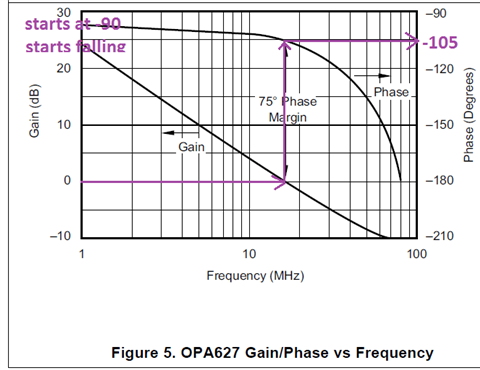Other Parts Discussed in Thread: OPA627
Hi team,
The customer has an unit gain bandwidth question for TL971.
For the figure 2 of the TL971 datasheet, when Gain is 0dB, the frequency(the blue line) is 12MHZ and the phrase (the red line) is 0.
Then 12MHZ is used as the unit gain bandwidth. The phase margin is 180-0=180.
The frequency of the input signal should be less than the frequency that the phrase margin is 180.
Unless the system will not be stable.
Is my understanding correct?
The customer would like to know :
a. How to calculate the phrase margin from the bode chart, like TL971?
Look at the attach, it is the figure of the OPA627 datasheet. Its phrase margin is 75.
I do not understand how to calculate the phrase margin from the bode chart.
b. What are the phrase on figure 1 and 2 and the phrase margin values when the system will start to be unstable?
Best Wishes,
Mickey Zhang
Asia Customer Support Center
Texas Instruments



